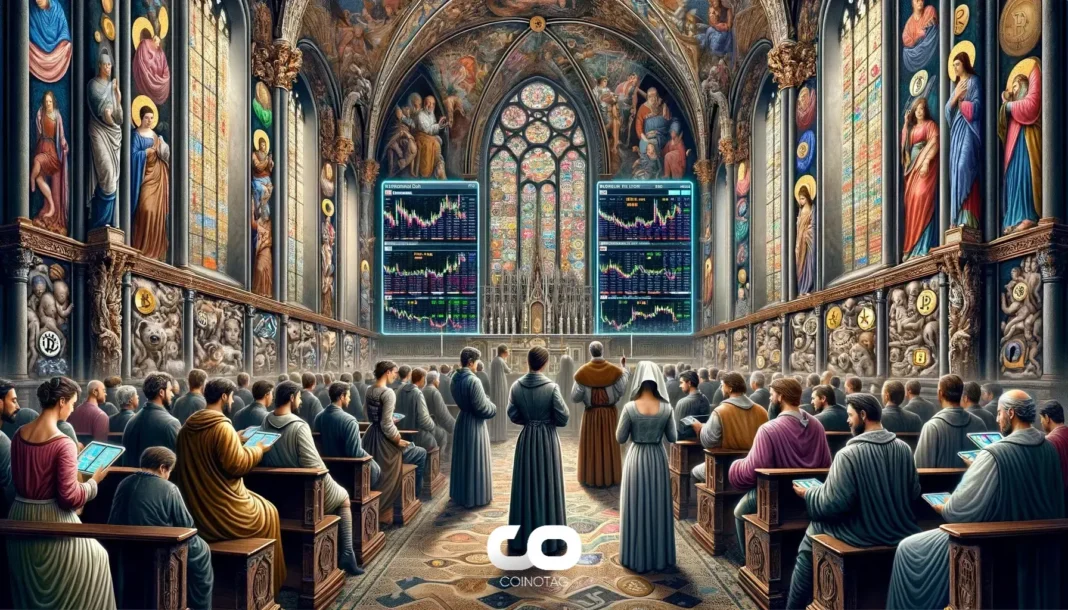-
Ripple’s $1.25 billion acquisition of Hidden Road marks a pivotal shift for the XRP Ledger, potentially enhancing its role in asset tokenization.
-
This strategic move enables Ripple to broaden its offerings within the burgeoning real-world asset (RWA) sector, indicating strong growth prospects.
-
According to Ripple’s CTO, David Schwartz, “Now imagine even a portion of that activity on the XRP Ledger — that’s exactly what Hidden Road plans on doing.”
Ripple’s acquisition of Hidden Road positions the XRPL for significant growth in tokenized assets, potentially transforming financial transactions for institutions.
Ripple’s Acquisition: An Industry Game Changer for Tokenization
Ripple’s acquisition of Hidden Road is more than just a business transaction; it’s poised to act as a catalyst for broader adoption of the XRP Ledger in institutional finance. Hidden Road, a prime brokerage firm, has an extensive network of over 300 institutional clients, processing upwards of $10 billion daily on traditional payment rails. This move suggests a future where even a fraction of that volume could shift to the XRP Ledger, drastically increasing its utility and reach in the financial ecosystem.
The Potential of the XRP Ledger in Asset Tokenization
With an established platform already in place, Ripple aims to facilitate asset tokenization through the XRP Ledger, promising scalability and efficiency. Historically, tokenization within this ecosystem has been minimal—previously tracing only two RWAs valued at around $50 million. However, with increased institutional backing from Hidden Road, experts anticipate a **surge** in tokenized asset transactions, which could effectively enhance liquidity and security in the markets.
The Growing Landscape of Real-World Assets (RWAs)
In tandem with Ripple’s acquisition, on-chain RWAs have witnessed a notable appreciation in value, reflecting a countertrend to the current cryptocurrency market’s volatility. The RWA market has expanded by 9.2% over the past month, demonstrating resilience and burgeoning interest as more asset holders engage with tokenized investments. The increasing value underscores the projected multi-trillion-dollar potential of RWAs, with analysts forecasted to reach at least $2 trillion by 2030.
Institutional Interest in Tokenization Expands
Prominent firms like CME Group and Google are at the forefront of exploring the advantages that a tokenized asset landscape can offer. By leveraging innovative technologies, including Google’s Cloud Universal Ledger, these companies aim to enhance operational efficiency in capital markets. Moreover, industry leaders, such as Prometheum’s CEO, highlight that current regulatory environments in the U.S. are conducive to asset tokenization, emphasizing the need for a robust secondary market to drive investment and interactivity in this arena.
Future Prospects for the XRP Ledger and Tokenization
The XRP Ledger, with its foundational advancements and the potential influx of institutional activity through Hidden Road, could redefine how assets are traded and maintained. Ripple’s commitment to this technology not only enhances the ledger’s visibility but also positions it to compete alongside traditional financial platforms in asset management. Furthermore, as regulations evolve and secondary markets emerge, the liquidity challenges that have hampered tokenized asset adoption may soon dissipate.
Conclusion
Ripple’s acquisition of Hidden Road serves as a transformative point for both the XRP Ledger and the future of tokenized assets in traditional finance. As institutions increasingly recognize the potential of tokenization, the XRP Ledger stands ready to facilitate this evolution, potentially reshaping the landscape of financial transactions. Future developments in this domain remain promising as the crypto sector matures and embraces regulatory clarity.







